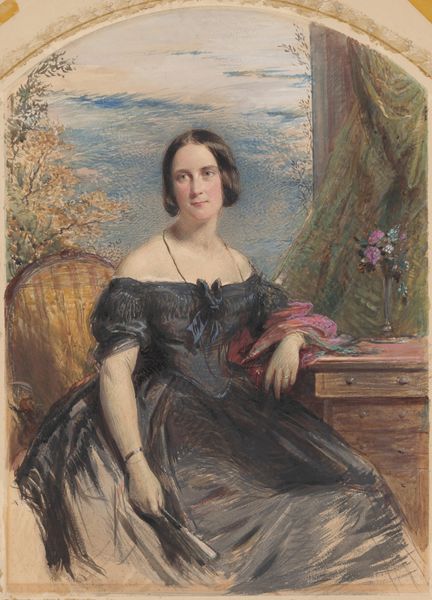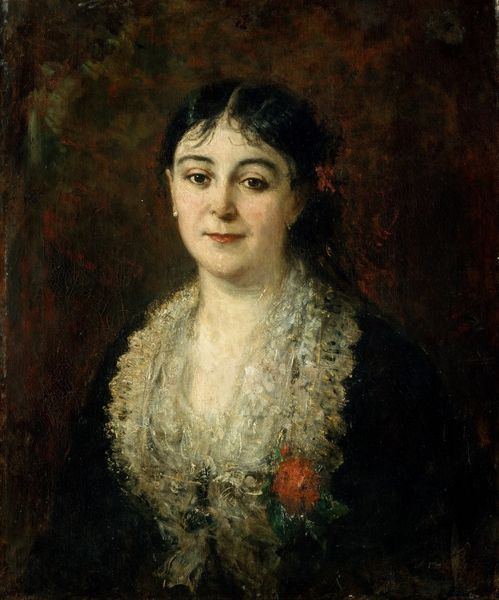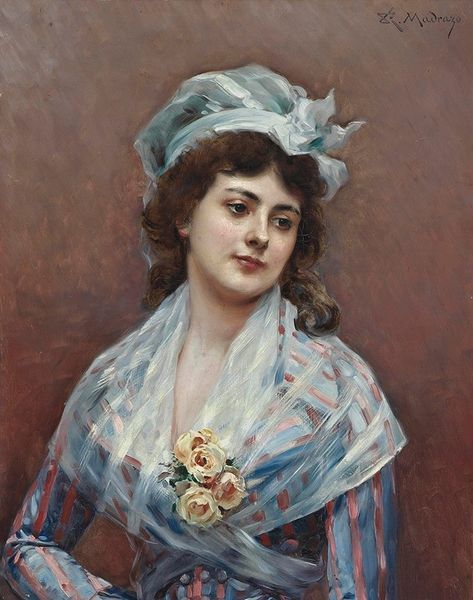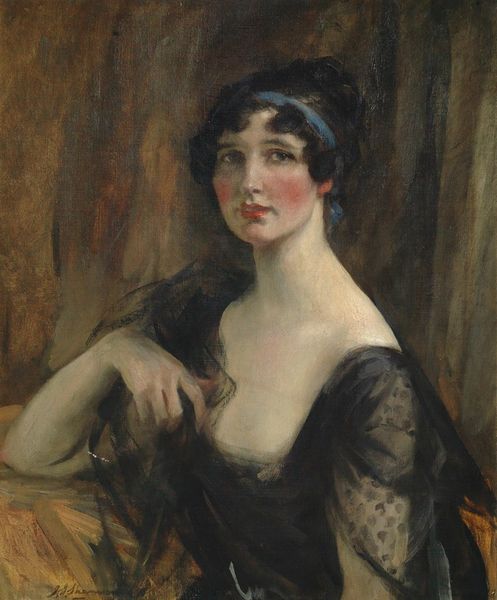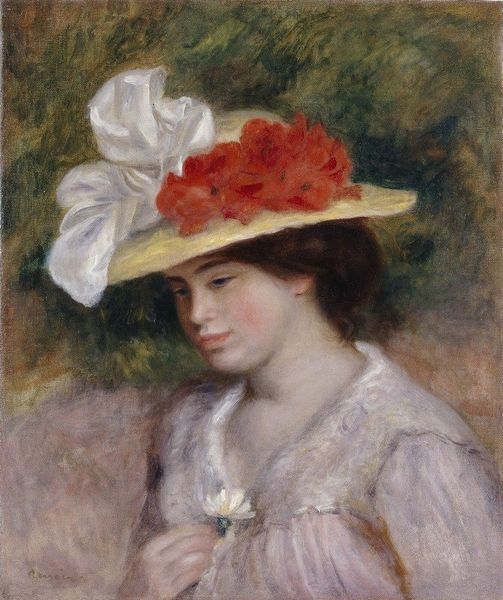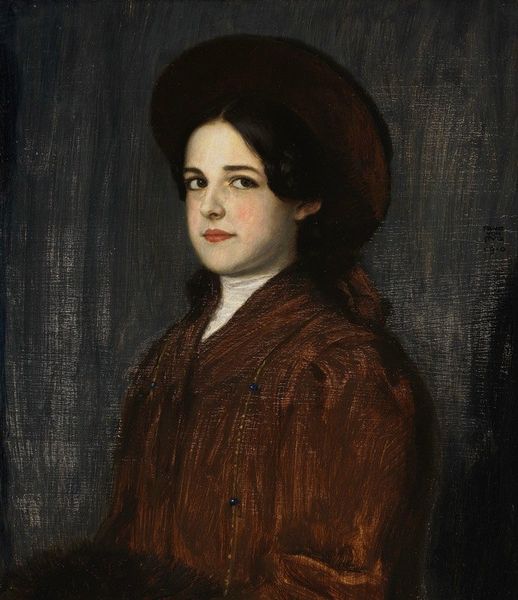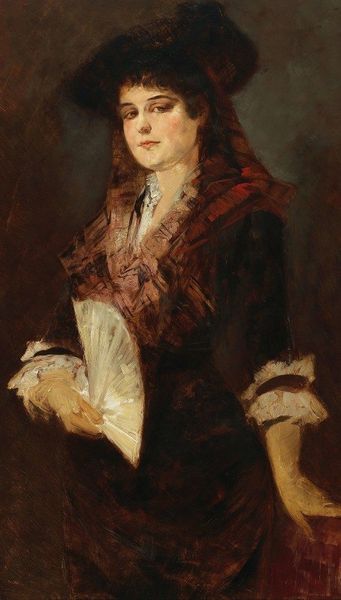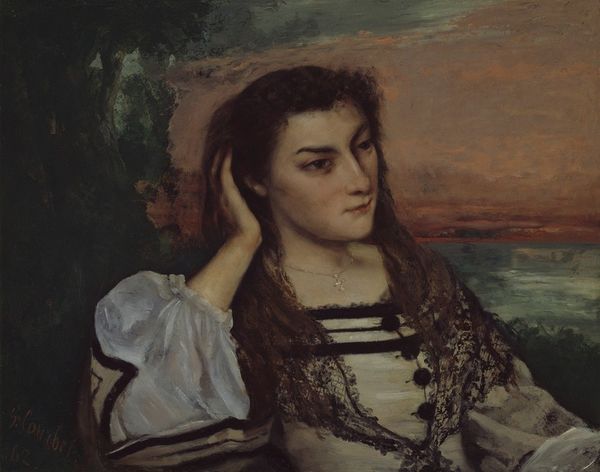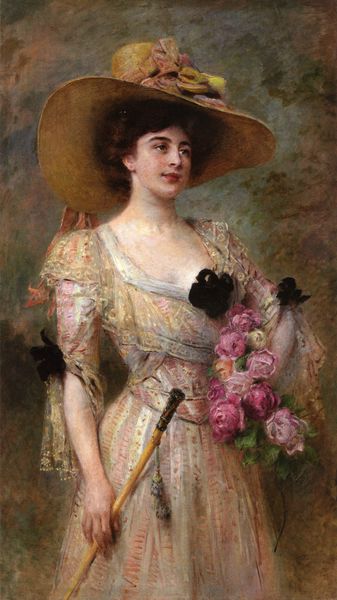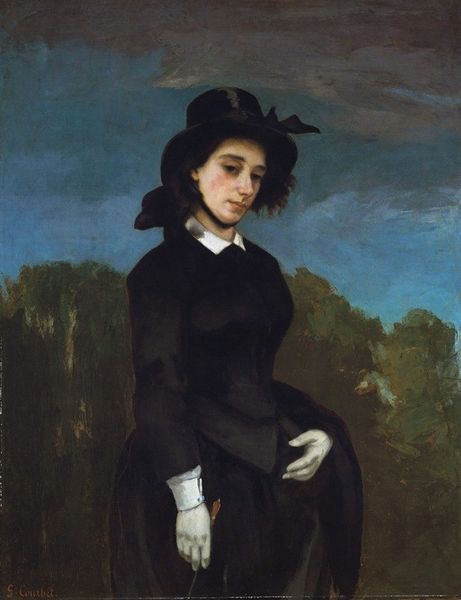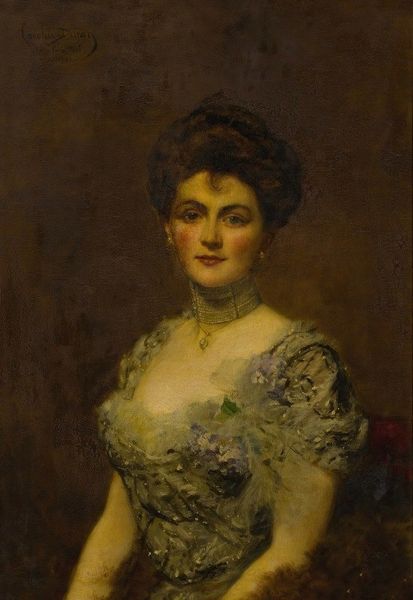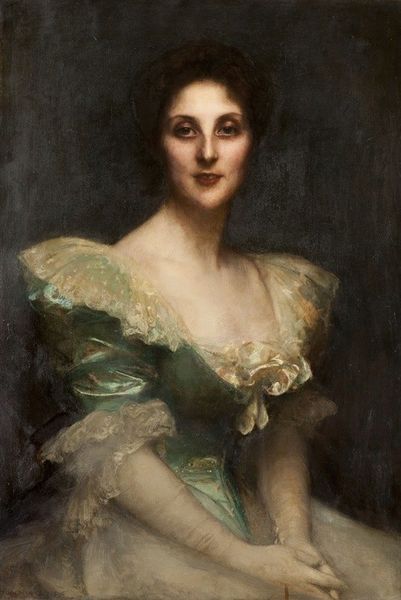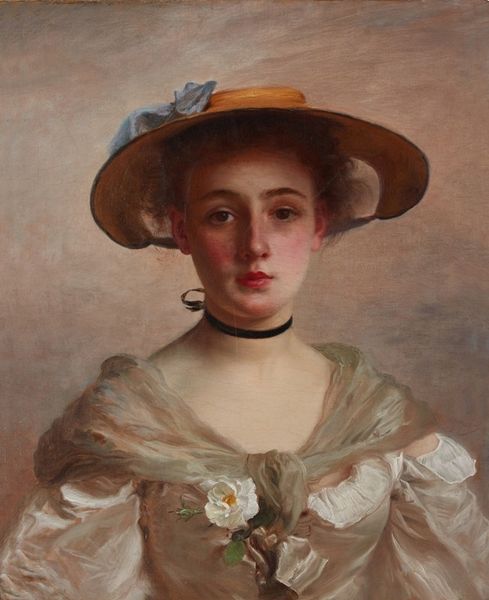
Copyright: Public Domain: Artvee
Curator: Standing before us is Gustave Courbet's painting "Mme L…," created in 1863. It’s an intriguing portrayal blending realism and romantic sensibilities, characteristic of his oeuvre. Editor: My immediate thought? Melancholy. There's a subtle somberness in her eyes and the muted palette he uses for the background sunset. The way her silk and lace combine feels particularly weighty somehow. Curator: Absolutely. Consider the social positioning implied in this image: Courbet often painted outside the bourgeois, but here he engages with representing its markers – costly fabrics like that beautiful lace, flowers, indicative of societal expectations of women during this period. This representation intersects with debates around gendered identity in Second Empire France. Editor: And looking closer at those materials, the oil paint handling itself is quite revealing. Observe the contrast between the smooth skin tones and the visible brushstrokes in the rendering of her dress, you can practically feel the texture of the velvet. Courbet seems acutely aware of conveying material qualities. Curator: Yes, his technique underscores the sitter's complexity. The darkness surrounding her is not simply aesthetic, but speaks to limitations placed upon women within that societal structure. She gazes outwards, seemingly questioning or resisting something. It’s a negotiation of power and visibility. Editor: That hand, clutching the flowers in the mustard colored glove – it also hints at the conditions of labor for the mostly anonymous female textile workers. This lace she wears required hours and hours to construct, and Courbet chooses to capture every single small weave on it, highlighting a kind of disconnect and dissonance through material expression. Curator: That's an insightful point. The painting operates on multiple levels, not just in portraiture, but in revealing undercurrents related to class and the socio-economic disparities inherent in representing luxury during that time. Editor: Precisely. It prompts us to consider not just *who* is portrayed, but *how* – how the materials signify labor, privilege, and even resistance, giving "Mme L..." so many more layers than may at first meet the eye. Curator: Considering Courbet's broader artistic commitments, seeing how the aesthetic intersects with those complex issues deepens our appreciation and understanding of his overall project and her positioning as subject within that. Editor: Ultimately, Courbet offers a textured snapshot of the moment, in the style he delivers and the weighty silks displayed, a material understanding of social experience.
Comments
No comments
Be the first to comment and join the conversation on the ultimate creative platform.
